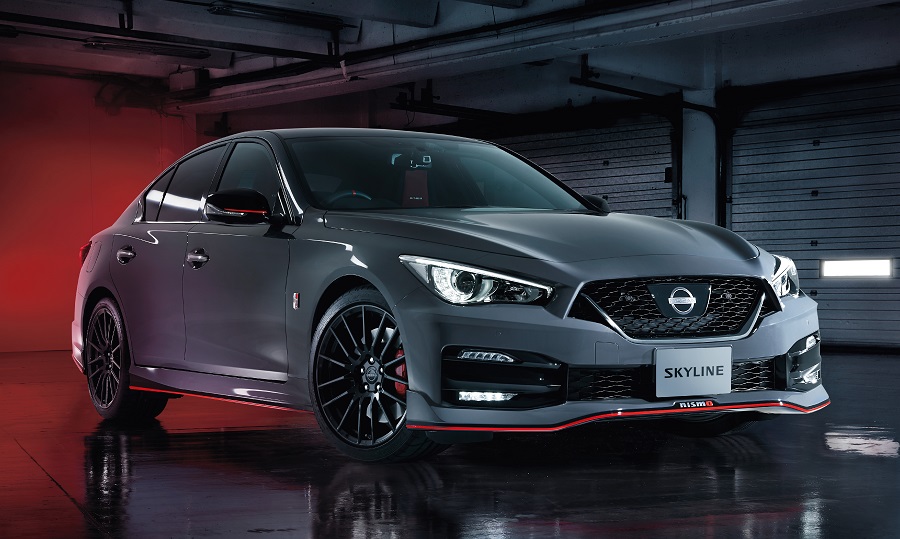The Nissan Skyline Nismo is a limited-run sports sedan set for the Japanese market. Here’s all you need to know about this modern JDM special.
Love Japanese tuner cars? If you’re on this website, there’s a good chance you’ve answered ‘yes’ to that question. In which case, you’ll be just as intrigued as I am to hear that there’s a new JDM-only performance car on the block. Growing up, these fast forbidden fruits captivated many of us, shrouded in an exotic mystique often only penetrable through car magazines, or video games like Gran Turismo. Nowadays, things are a little different. The internet age means that nothing is scarce or hard to find, and frankly, since the ’90s and ’00s, the modern Japanese domestic market hasn’t exactly been churning out the same rate of sporty gems.
This Nissan Skyline Nismo is a blast from the past in that sense, and a very welcome one. So, if the R35 GT-R’s departure from its Skyline-based roots left you feeling a bit bittersweet about that model line’s fate, this car – nearly 20 years later – should go some way to mending those wounds. Here’s why…
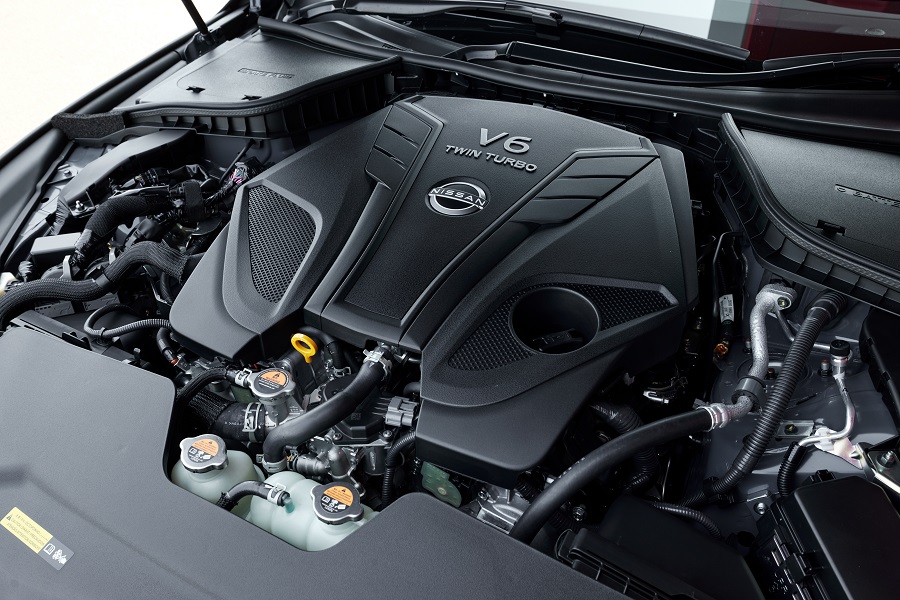
Engine Tuning
While the current-gen Nissan GT-R has become its own standalone high-end model, this Nissan Skyline Nismo is made from a recipe that’s much more comparable to the Skyline GT-Rs of old. Nismo has used the modern-day JDM Skyline sedan as a base, and sprinkled on a whole host of extra ingredients to give it a much punchier flavor. Which is exactly what Nissan used to do when building its classic GT-R models.
As for what this newcomer has got up its sleeve, let’s start with the engine. The Nissan Skyline Nismo makes use of a tuned version of the VR30-DDTT. In non-Nissan speak, that’s a 3.0-liter twin-turbo V6 with some additional fettling. For context, the version of this engine found in the current 400R Skyline produces 399hp, but thanks to some work by the guys who build Nissan’s GT500 engines, the VR30’s power output now stands at 414hp in the Nismo. By contrast, the Nissan Z Nismo‘s VR30 produces 420hp.
As for how Nismo has achieved these power gains, well that’s all under wraps for now. Though, if you fancy jumping to conclusions, we’d point you back towards the Z Nismo, which saw greater power levels over the standard car thanks to some extra turbo boost being dialed in. It wouldn’t blow our minds to find out that Nismo has done something similar with the Skyline. Anyway, those 414 ponies get sent to the rear wheels via a 7-speed automatic transmission. Alright, that’s where the old-school façade falls apart, but at least you get to choose between quicker shifts in Sport+ mode, or a smoother drive in regular mode.
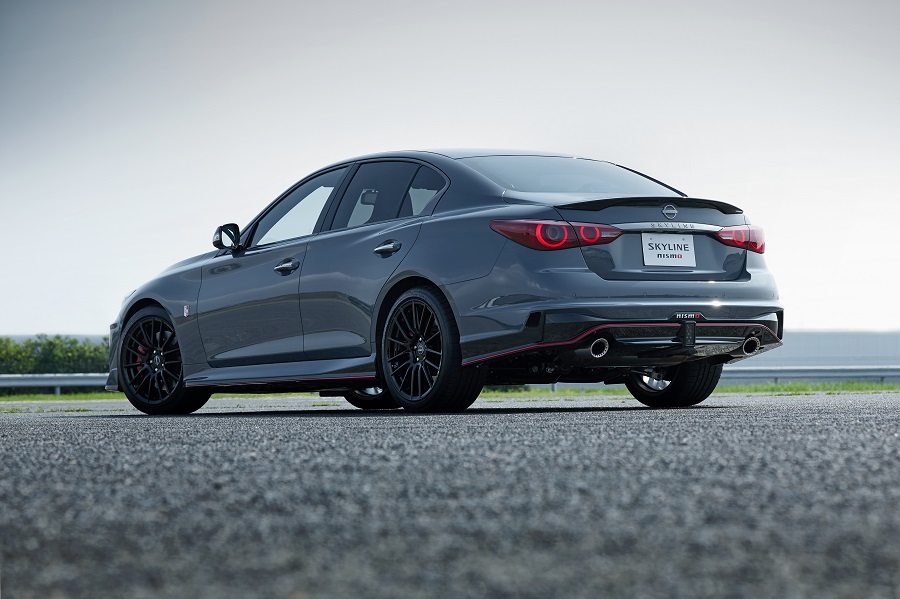
Handling Modifications
Plenty of work has gone into making sure that the Nissan Skyline Nismo plays nice with its new-found power. Tires are naturally very important, and as such the ones fitted to the rear axle are 20mm wider than those you’d find on the standard Skyline. Within each tire, sits a bespoke 19-inch Enkei rim, which helps to reduce the car’s unsprung weight. To supplement that, Nismo has also reworked the suspension to reduce body roll, but again, details of what that entails are hazy.
Elsewhere, the Skyline Nismo benefits from new brake pads with a better resistance to fade, while Nissan’s performance engineers have also re-tuned its ABS system to work in conjunction with all those upgraded parts.
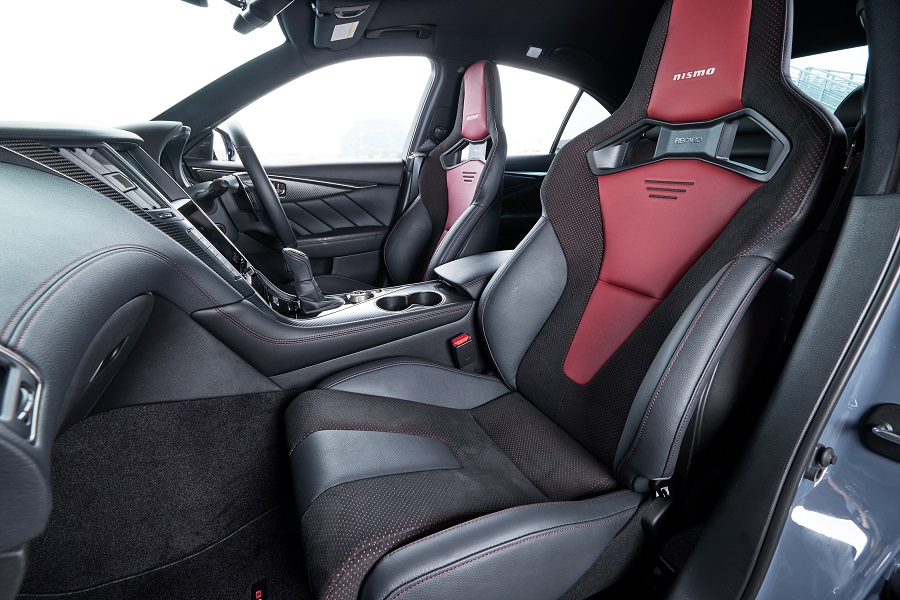
Styling Features
Nismo’s modest yet instantly recognizable aesthetic cues are present here, across the whole car. On the outside, black splitters and red accents complement the subtle body kit. That color palette travels through into the car’s upholstery as well. And, although Stealth Grey seems to be Nismo’s go-to launch color these days, you can choose from four additional paints if you’d rather something different. The other options include white, black, a different grey (yawn), and a vibrant red.
As for that aforementioned body kit, it is actually functional as well as just being a visual enhancement. The new bumper moldings help to improve the car’s aerodynamics, while the re-designed grille aids engine cooling.
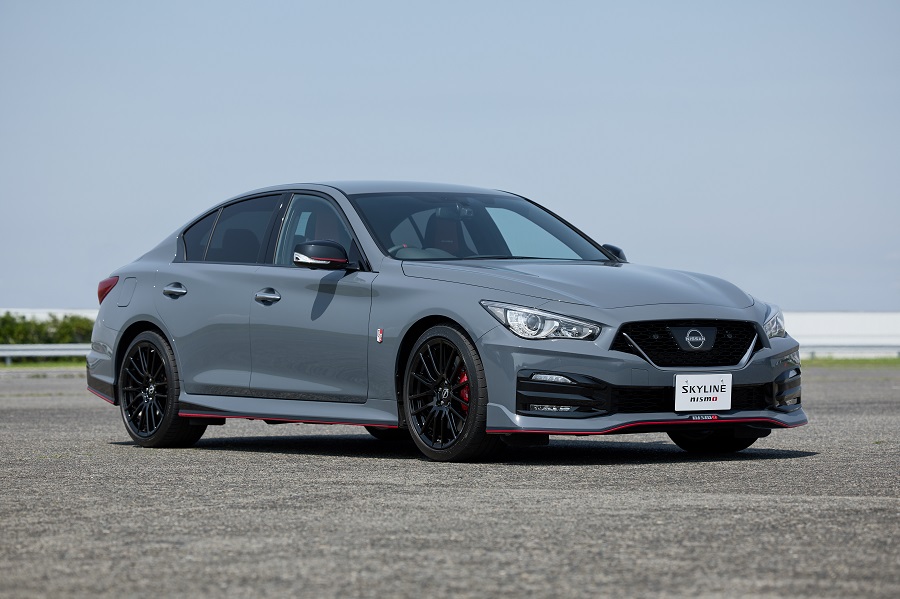
Price & Availability
If you want one, that’ll be fairly difficult to achieve. Only 1000 will enter production, and every single one will remain within the Japanese domestic market. Still, if you were theoretically in the position to buy one, it’d cost you between 7.9M yen to 9.5M yen, depending on trim level. That translates to somewhere between $55,000-$66,500, or £43,500-£52,000. In the grand scheme of things, those prices don’t seem too bad for something so rare.

